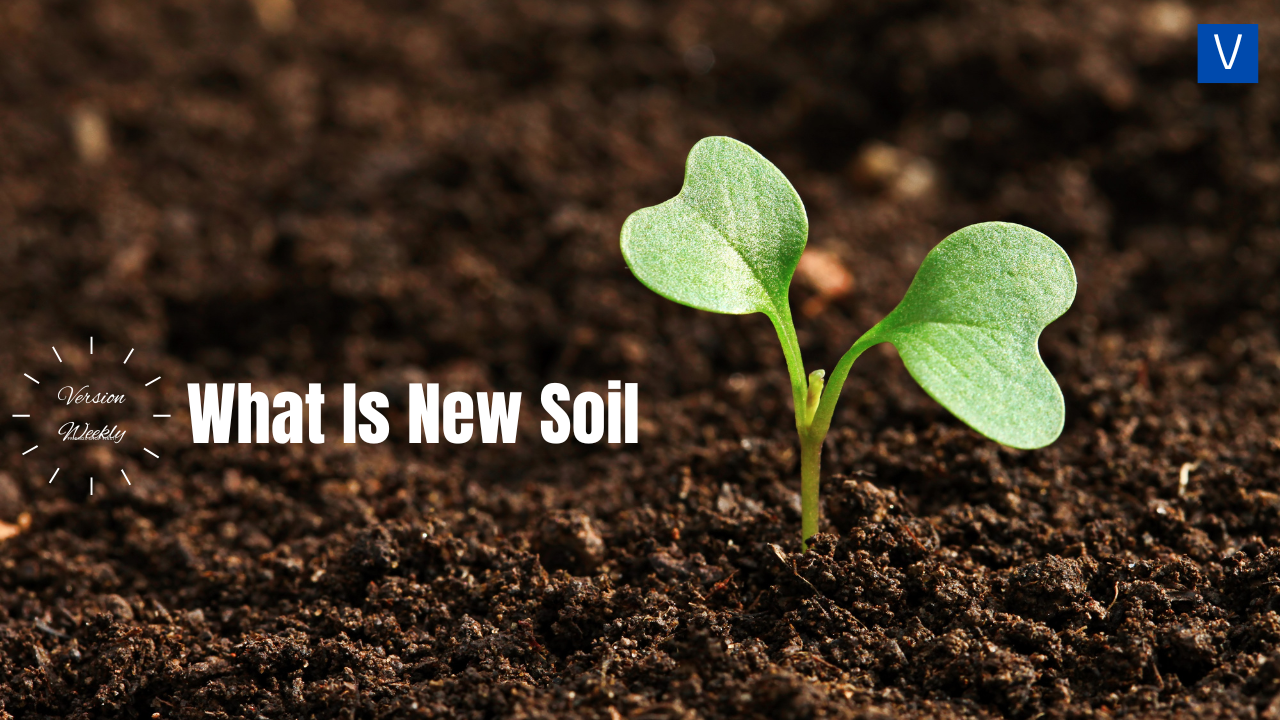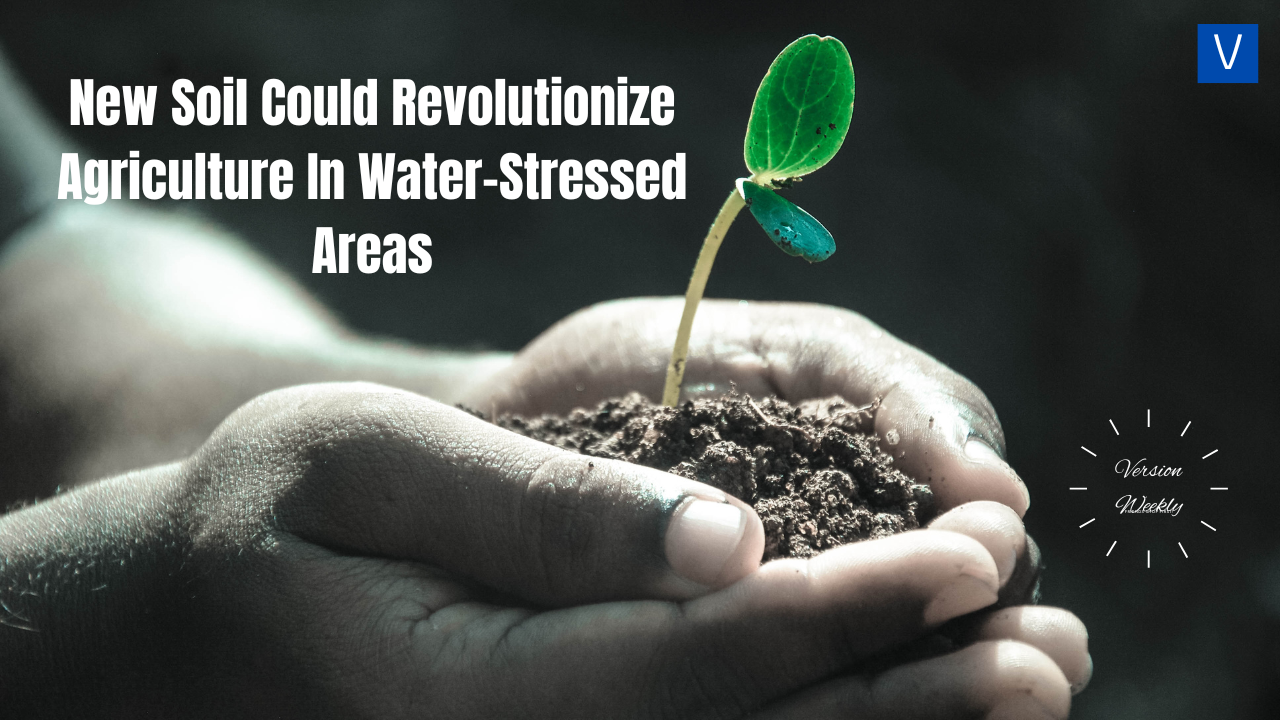New Soil Could Revolutionize Agriculture In Water-Stressed Areas: The world is facing a water crisis. By 2050, two-thirds of the world’s population could be living in water-stressed areas. This has a major impact on agriculture, as water is essential for growing crops.
In response to this crisis, researchers at the University of California, Davis, have developed a new type of soil that could revolutionize agriculture in water-stressed areas. The ground is made from recycled materials, including agricultural waste and construction debris, and is designed to retain water more effectively.
The idea for the new soil came from the researchers’ work on aquaponics. Aquaponics is a method of growing plants and fish together in a closed system. The plants use the water from the fish tank to grow, and the fish waste provides nutrients for the plants.
The researchers realized that the recycled materials used in aquaponics could also be used to make soil that could retain water more effectively. They developed a mixture of recycled materials, including rice husks, straw, and sand, and then heated the mixture to kill any harmful bacteria. The soil was then inoculated with beneficial bacteria and fungi.
The researchers have tested the new soil in greenhouses and have found that it can be used to grow a variety of crops, including tomatoes, cucumbers, and lettuce. The crops grown in the new soil were found to be as healthy and productive as crops grown in traditional soil.
The researchers believe that the new soil could be used to help farmers in water-stressed areas to grow crops. The soil could also be used to grow crops in urban areas, where space is limited.
The development of the new soil is a promising development for agriculture. The soil could help to increase food production in water-stressed areas and could also help to reduce the environmental impact of agriculture.
The researchers are currently working to scale up production of the new soil and to make it more affordable. They believe that the soil has the potential to revolutionize agriculture and help ensure food security for a growing population. This is how the thought came up to the researchers. Let’s see who made this excellent work, for the sake of farmers and agriculture.
What Is New Soil, Who Introduced This Development, And Benefits

A team of researchers from the University of California, Davis, has developed a new type of soil that can grow crops in water-stressed areas. The ground is made from recycled materials, including agricultural waste and construction debris, and is designed to retain water more effectively.
The new soil is called “aquaponic soil.” Aquaponics is a method of growing plants and fish together in a closed system. The plants use the water from the fish tank to grow, and the fish waste provides nutrients for the plants.
The aquaponic soil is made from a mixture of recycled materials, including agricultural waste, such as rice husks and straw, and construction debris, such as sand and gravel. The materials are mixed together and then heated to kill any harmful bacteria. The soil is then inoculated with beneficial bacteria and fungi.
The aquaponic soil is able to retain water more effectively than traditional soil. This is because the recycled materials in the soil have a high capacity to hold water. The soil also has a good drainage system, which helps to prevent waterlogging.
The researchers have tested the aquaponic soil in greenhouses and have found that it can be used to grow a variety of crops, including tomatoes, cucumbers, and lettuce. The crops grown in the aquaponic soil were found to be as healthy and productive as crops grown in traditional soil.
The researchers believe that the aquaponic soil could be used to help farmers in water-stressed areas to grow crops. The soil could also be used to grow crops in urban areas, where space is limited.
The development of the aquaponic soil is a promising development for agriculture. The soil could help to increase food production in water-stressed areas and could also help to reduce the environmental impact of agriculture.
Here are some of the benefits of using aquaponic soil:
- It can retain water more effectively than traditional soil, which can help to reduce water usage.
- It can be used to grow a variety of crops, including crops that are typically grown in water-stressed areas.
- It is a sustainable way to grow crops, as it does not require the use of synthetic fertilizers or pesticides.
- It can be used in urban areas, where space is limited.
- The aquaponic soil is still in the early stages of development, but it has the potential to revolutionize agriculture. The soil could help to make food production more sustainable and could help to ensure food security for a growing population.
Process Of Developing A New Type Of Soil And Challenges
Here is the process of developing a new type of soil that can grow crops in water-stressed areas:
- Gather the materials: The first step is to gather the materials that will be used to make the soil. These materials can include agricultural waste, such as rice husks and straw, and construction debris, such as sand and gravel.
- Mix the materials: Once the materials have been gathered, they are mixed together in a large container. The mixing process helps to evenly distribute the materials and to break down any large pieces.
- Heat the mixture: The next step is to heat the mixture to kill any harmful bacteria. The mixture is heated to a temperature of about 160 degrees Fahrenheit for about an hour.
- Inoculate the mixture: Once the mixture has been heated, it is inoculated with beneficial bacteria and fungi. These organisms help to break down organic matter and to improve the fertility of the soil.
- Test the soil: Once the soil has been inoculated, it is tested to make sure that it is free of harmful bacteria and that it has the right balance of nutrients.
- Use the soil to grow crops: Once the soil has been tested and approved, it can be used to grow crops. The soil can be used in greenhouses or in outdoor gardens.
The process of developing a new type of soil that can grow crops in water-stressed areas is complex and time-consuming. However, the potential benefits of this new type of soil are significant. The soil could help to increase food production in water-stressed areas and could also help to reduce the environmental impact of agriculture.
Here are some of the challenges that need to be addressed in order to develop a new type of soil that can grow crops in water-stressed areas:
- Finding the right combination of materials that will retain water effectively and provide the necessary nutrients for crops.
- Ensuring that the soil is free of harmful bacteria and other contaminants.
- Developing a cost-effective way to produce the soil.
- Testing the soil in a variety of conditions to make sure that it is suitable for growing crops in different climates.
- Despite these challenges, the development of a new type of soil that can grow crops in water-stressed areas is a promising development for agriculture. The soil could help to make food production more sustainable and could help to ensure food security for a growing population.
Here are some ways in which the new type of soil developed that can grow crops in water-stressed areas can help farmers and researchers for further advancement of agriculture:
For farmers:
- The new soil can help farmers to grow crops in areas where water is scarce.
- The soil can help farmers to reduce their water usage, which can save them money.
- The soil can help farmers to grow a variety of crops, even in water-stressed areas.
- The soil can help farmers to improve the quality of their crops.
For researchers:
- The new soil can be used to conduct research on new crop varieties and farming practices.
- The soil can be used to develop new irrigation methods and water conservation techniques.
- The soil can be used to study the effects of climate change on agriculture.
- The soil can be used to develop new ways to improve the sustainability of agriculture.
The new type of soil is still in the early stages of development, but it has the potential to revolutionize agriculture. The soil could help to make food production more sustainable and could help to ensure food security for a growing population.
Here are some specific examples of how the new soil could help farmers and researchers:
- A farmer in a water-stressed area could use the new soil to grow crops that are typically grown in more humid climates. This could help the farmer to increase their income and to provide food for their community.
- A researcher could use the new soil to conduct research on new crop varieties that are resistant to drought. This research could help to develop crops that can be grown in water-stressed areas in the future.
- A government agency could use the new soil to develop new irrigation methods that can help farmers to conserve water. This could help to reduce the amount of water used in agriculture and to protect the environment.
- The new type of soil is a promising development for agriculture. It has the potential to help farmers and researchers to grow more food in a more sustainable way.
The Soil That Can Save the World!
Similar News:
